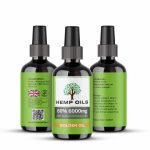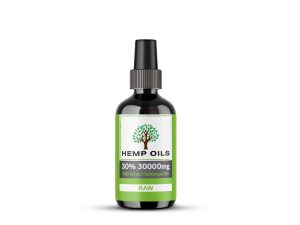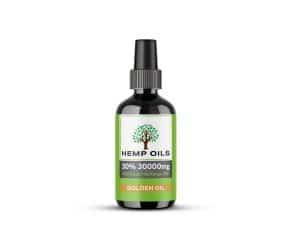Understanding the Process of Making Hemp Oil ===
Hemp oil, also known as CBD oil, has gained significant popularity in recent years for its potential health benefits. This natural oil is derived from the hemp plant and is known for its high concentration of cannabinoids, such as cannabidiol (CBD). If you are interested in producing hemp oil in Las Vegas, NV, it is important to understand the process involved. This article will provide a step-by-step guide, along with information on the necessary equipment and ingredients, as well as safety precautions to ensure a safe and effective production.
===Step-by-Step Guide: Producing Hemp Oil in Las Vegas, NV ===
-
Harvesting and Drying: The first step in making hemp oil is harvesting the hemp plants at the right time. This typically occurs during the flowering stage when the plants have reached maturity. Once harvested, the plants should be hung upside down in a well-ventilated area to dry. This process helps remove excess moisture and allows for better extraction of cannabinoids.
-
Extraction: After the hemp plants have dried, the next step is to extract the cannabinoids from the plant material. There are various methods for extraction, including solvent-based extraction and CO2 extraction. Solvent-based extraction involves using solvents like ethanol or butane, while CO2 extraction utilizes carbon dioxide under high pressure. Both methods have their own advantages and drawbacks, so it is essential to choose the most suitable method for your specific needs.
-
Filtering and Purifying: Once the cannabinoids are extracted, the next step is to filter and purify the oil. This process removes any impurities and undesirable compounds, resulting in a cleaner and more potent hemp oil. Filtration can be achieved through different techniques, such as using filter papers or specialized filtration systems.
-
Decarboxylation: Decarboxylation is a crucial step in activating the cannabinoids present in the hemp oil. This process involves heating the oil at a specific temperature for a certain duration. Decarboxylation converts the inactive acidic forms of cannabinoids, such as CBDA and THCA, into their active counterparts, CBD and THC, respectively.
-
Testing and Quality Control: To ensure the safety and efficacy of the hemp oil, it is essential to conduct thorough testing and quality control checks. This includes testing for potency, purity, and the presence of any contaminants. Hiring a reputable third-party laboratory for these tests is highly recommended to maintain transparency and ensure accurate results.
-
Packaging and Storage: After the hemp oil has undergone all the necessary steps, it is ready for packaging and storage. Choosing suitable containers that are light-resistant and airtight is important to preserve the oil’s quality. Proper labeling with accurate information about the product is also crucial for compliance with local regulations and consumer transparency.
===Equipment and Ingredients: What You’ll Need for the Process ===
To produce hemp oil in Las Vegas, NV, you will require the following equipment and ingredients:
-
Hemp plants: Source high-quality hemp plants that are rich in cannabinoids, preferably from reputable suppliers.
-
Harvesting tools: Prepare tools such as pruning shears or scissors to harvest the hemp plants effectively.
-
Drying area: Set up a well-ventilated area where the harvested hemp plants can be hung upside down to dry.
-
Extraction equipment: Depending on the chosen extraction method, you will need equipment such as a solvent extractor or a CO2 extraction machine.
-
Filtration system: Acquire filter papers or specialized filtration systems for purifying the extracted oil.
-
Decarboxylation oven: Invest in an oven capable of maintaining accurate temperatures for decarboxylation.
-
Testing and quality control: Establish a partnership with a reliable third-party laboratory for comprehensive testing and quality control measures.
-
Packaging materials: Choose suitable containers that protect the oil from light and air exposure.
===Safety Precautions: Ensuring a Safe and Effective Production ===
When producing hemp oil, it is crucial to prioritize safety to ensure a safe and effective production process. Here are some essential safety precautions to consider:
-
Proper ventilation: Ensure that the extraction area is well-ventilated to prevent the accumulation of potentially harmful solvents or gases.
-
Personal protective equipment: Use appropriate personal protective equipment, including gloves, safety goggles, and lab coats, when handling hemp plants and extraction equipment.
-
Fire safety: Be aware of the flammable nature of certain solvents used in extraction and take necessary precautions, such as keeping fire extinguishers nearby and avoiding open flames in the extraction area.
-
Compliance with regulations: Familiarize yourself with local regulations regarding hemp cultivation and oil production to ensure legal compliance.
-
Proper disposal: Dispose of any waste materials, such as plant material or solvents, in accordance with local regulations and environmental guidelines.
-
Training and education: Ensure that all personnel involved in the production process are properly trained on safety protocols and the correct handling of equipment and materials.
===
Producing hemp oil in Las Vegas, NV, requires careful attention to each step of the process, from harvesting and extraction to testing and packaging. By following this step-by-step guide, using the necessary equipment and ingredients, and implementing safety precautions, you can successfully produce high-quality hemp oil that meets the desired standards of potency, purity, and safety. Always remember to stay informed about the latest regulations and industry best practices to ensure compliance with local laws and maintain consumer trust in your product.




